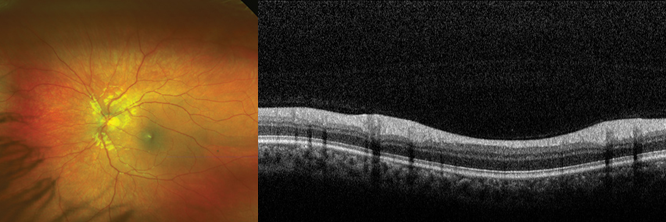What is Retinal imaging?
Retinal imaging is a non-invasive & completely safe method of obtaining pictures of the back of the eye.

What is retinal imaging?
Light from very low-power lasers or a camera flash enters the eye through the pupil. Light reflected back leaves the same way to be collected by the machine creating an image of the retina. Similar types of imaging are performed at a high street optician for a standard eye health check-up. However, we analyse these images in more detail to see what other information they could reveal about the health of human body and brain.
What it used for?
The back of the eye is called the retina and is one of the few places in the human body allowing easy observation of blood vessels and nerves. These anatomical structures are shared with the brain, but where they are much less accessible. We are researching how we can use information from images of the retina to understand what is happening in the brain.
Subtle changes in the retina may reflect similar processes happening and these early signs may precede declining brain health by years or even decades. Studying blood vessels in the eye is also useful in detecting and understanding diseases that affect the human circulatory system such as high blood pressure, diabetes and heart disease.
For example, with further research, we may soon be able to identify people with undiagnosed high blood pressure through pictures of their retina, thus enabling a doctor to prescribe appropriate medication and considerably reduce their risk of having a future heart attack or stroke.

Retinal imaging can be used to see:
- Blood vessels that lie close to the surface as well as those that are located deeper in the retina
- The optic nerve head where blood vessels and nerves enter and leave the eye
- The different cellular layers which contain nerves and axons
- The macular, which is the part of our eye responsible for central vision
Relevant Edinburgh Imaging publications

